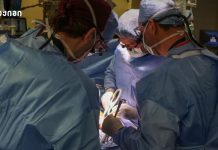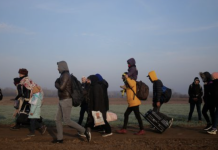7 October 2024. Tbilisi, Georgia
Professor Giorgi Pkhakadze, Chair of the Public Health Institute of Georgia (PHIG)
Antimicrobial resistance (AMR) poses one of the most urgent global health threats today, driven by the overuse and misuse of antibiotics in human healthcare, agriculture, and animal farming. Low- and middle-income countries (LMICs), along with vulnerable populations such as migrants and refugees, are disproportionately affected. These groups often face significant barriers to healthcare, including overcrowded living conditions, limited access to essential medicines, and interrupted care, all of which contribute to the spread of resistant infections. The UNGA79 side event, held on 26 September 2024 in New York, highlighted the need for political commitment, healthcare system reforms, and policies that address the specific needs of at-risk populations.
In Georgia, AMR is a growing concern, aggravated by the misuse of antibiotics, unequal access to healthcare, and the presence of large populations of internally displaced persons (IDPs), migrants, and refugees. Integrating AMR management into the national healthcare reform, while improving healthcare access and quality, is essential. Georgia must prioritize developing its healthcare system to address these challenges, while ensuring that international standards are applied in managing the unique vulnerabilities of migrant and refugee populations.
Global Overview of AMR
AMR is ranked by the World Health Organization (WHO) as one of the top 10 threats to global health. By 2050, it is projected that AMR could cause up to 10 million deaths annually if no significant actions are taken to address it.
The misuse of antibiotics in healthcare, agriculture, and animal farming accelerates the development of drug-resistant bacteria, posing a major global health crisis. Key statistics demonstrate the severity of this problem:
• Global Mortality: AMR could result in 10 million deaths annually by 2050 (1).
• Current Impact: Approximately 700,000 people die each year from drug-resistant infections.
• Economic Burden: AMR is projected to cost the global economy $100 trillion by 2050 due to increased healthcare costs and productivity losses.
• Impact on LMICs: LMICs will experience the most severe consequences of AMR, with a projected reduction of 3.8% in global GDP (3).
AMR and Its Impact on Migrant and Refugee Populations
Migrants and refugees are particularly vulnerable to AMR due to their living conditions, disrupted healthcare access, and limited availability of medications. The WHO’s Global Evidence Review on Health and Migration emphasizes that these populations often face barriers in accessing healthcare, leading to the self-medication and misuse of antibiotics.
Incomplete courses of antibiotics are common among displaced populations, contributing significantly to the spread of resistant infections.
The ongoing war in Ukraine has exacerbated the AMR crisis, with over 7 million people displaced, including more than 5 million refugees seeking shelter in neighboring countries such as Poland and Romania.
In these overcrowded environments, where healthcare systems are under strain, the risk of AMR spreading is high. The migration crisis from Russia, triggered by political and economic instability, has further burdened healthcare systems across Europe and the Middle East.
AMR in the Caucasus Region: Challenges and Vulnerabilities
The Caucasus region, including Georgia, Armenia, and Azerbaijan, faces unique challenges in addressing AMR. These challenges are driven by unregulated antibiotic use, weak healthcare infrastructure, and the large populations of displaced persons, refugees, and migrants.
• Armenia and Azerbaijan: Both countries face high rates of antibiotic misuse, with antibiotics often sold over the counter without a prescription. In Azerbaijan, 35% of hospital-acquired infections are associated with multidrug-resistant bacteria, while in Armenia, 20% of hospital infections are linked to inadequate infection control measures.
• Turkey: Home to more than 4 million refugees, Turkey ranks among the highest in Europe for antibiotic consumption. Overcrowded refugee camps and limited healthcare access have further exacerbated the AMR problem.
• Russia and Ukraine: In Russia, where 40% of antibiotics are sold without prescriptions, AMR is becoming a growing public health concern. The ongoing conflict in Ukraine has disrupted healthcare systems, fueling the spread of resistant infections among displaced populations.
AMR in Georgia: Current Challenges and Vulnerabilities
In Georgia, AMR is driven by the misuse of antibiotics, limited healthcare access in rural areas, and the presence of displaced populations. While the National Action Plan on AMR, launched in 2017, outlines a strategy to address these challenges, its implementation is incomplete, leaving gaps in Georgia’s ability to manage AMR effectively.
• Antibiotic Misuse: In Georgia, 30% of antibiotics are sold without a prescription, and self-medication is particularly common in rural areas. Surveys indicate that 60% of rural residents report using antibiotics without consulting a healthcare provider, exacerbating the AMR crisis.
• Hospital-Acquired Infections (HAIs): Approximately 35% of hospital-acquired infections in Georgia involve multidrug-resistant organisms (MDROs). The spread of resistant infections is particularly concerning in rural hospitals where infection prevention and control measures are weak.
• Vulnerable Populations: Georgia hosts a significant number of IDPs due to conflicts in the Abkhazia region and the Tskhinvali region (South Ossetia). These populations face substantial barriers to healthcare access, with 20% of infections among displaced populations being resistant to at least one antibiotic
Insights from the UNGA79 Side Event: Key Takeaways for Georgia
The UNGA79 side event on AMR emphasized the need for political commitment, public-private partnerships, and stronger healthcare systems to address AMR. The following takeaways are particularly relevant for Georgia’s efforts to combat AMR:
• Political Commitment: Georgia must prioritize AMR as part of its national healthcare reform. Aligning national policies with international best practices, especially regarding healthcare access for vulnerable populations, is essential to ensuring long-term solutions.
• Public-Private Partnerships: Collaboration between the government, international organizations, and pharmaceutical companies is vital for developing new antibiotics and ensuring equitable access to these treatments. These partnerships can provide the necessary resources and expertise to manage AMR effectively.
• Strengthening Healthcare Systems: Georgia must continue investing in healthcare infrastructure, particularly in rural areas. Stronger infection prevention and control measures, improved healthcare access, and the ongoing professional development of healthcare workers are critical to addressing AMR.
Healthcare Reform and AMR: A Path Forward for Georgia
Georgia’s healthcare reform must place AMR at the forefront, with a comprehensive strategy addressing antibiotic misuse and strengthening healthcare infrastructure. The following actions are recommended for Georgia to tackle AMR effectively:
1. Implement the National Action Plan (NAP) on AMR: Full execution of the NAP is essential, with stricter regulations on antibiotic sales, enhanced public awareness campaigns about antibiotic misuse, and the training of healthcare professionals on antimicrobial stewardship.
2. Strengthen Infection Prevention and Control (IPC): Georgia must improve IPC measures, particularly in rural hospitals, to reduce hospital-acquired infections and prevent the spread of resistant bacteria. Training healthcare workers in IPC best practices is critical for success.
3. Expand Healthcare Access for Vulnerable Populations: Given Georgia’s large population of IDPs and refugees, the healthcare system must ensure equitable access to care for all populations. Culturally competent care, combined with targeted services for vulnerable groups, will help prevent the spread of AMR.
4. Utilize Global Tools for Workforce Development: Tools such as the WHO Competency Standards for Health Workers can be used as one approach to ensure healthcare professionals are well-equipped to manage AMR and provide high-quality care to all populations.
Conclusion
AMR represents an urgent global health threat, particularly in LMICs and regions with large migrant and refugee populations. The UNGA79 side event underscored the importance of international cooperation, political commitment, and strengthened healthcare systems in combating AMR. For Georgia, fully implementing its National Action Plan on AMR, enhancing healthcare access, and improving infection control measures are critical steps in the fight against AMR. By addressing these challenges and utilizing global tools to strengthen the healthcare workforce, Georgia can position itself as a leader in the fight against AMR, both within its borders and across the Caucasus region.
References
1. World Health Organization. Antimicrobial resistance. WHO fact sheet. 2021. [Available from: https://www.who.int/news-room/fact-sheets/detail/antimicrobial-resistance].
2. Centers for Disease Control and Prevention. About antimicrobial resistance. 2022. [Available from: https://www.cdc.gov/drugresistance/about.html].
3. World Bank. Antimicrobial resistance (AMR): Tackling a crisis for the health and wealth of nations. 2017. [Available from: https://www.worldbank.org/en/topic/health/brief/antimicrobial-resistance-amr].
4. International Organization for Migration. Health Needs Assessment for Migrants and Refugees in Georgia. 2022.
5. UNHCR. Global trends: Forced displacement in 2021. 2023. [Available from: https://www.unhcr.org/global-trends.html].
6. United Nations. UNGA79 Side Event on AMR in Migrants and Refugees. 2024. [Available from: https://www.un.org/press/en/2023/ga12465.doc.htm].
7. WHO Europe. Antimicrobial resistance surveillance in Azerbaijan. 2021. [Available from: https://www.euro.who.int/en/health-topics/disease-prevention/antimicrobial-resistance/antimicrobial-resistance].
8. WHO Europe. AMR in Armenia: Current status and prevention measures. 2022. [Available from: https://www.who.int/europe/publications/i/item/WHO-EURO-2022-5587-45489-65592].
9. European Centre for Disease Prevention and Control. Antimicrobial consumption in Europe. 2021. [Available from: https://www.ecdc.europa.eu/en/publications-data/antimicrobial-consumption-europe-2021].
10. WHO Europe. AMR in Russia: Current Situation. 2022. [Available from: https://www.euro.who.int/en/health-topics/disease-prevention/antimicrobial-resistance].
11. National Center for Disease Control and Public Health of Georgia. Antimicrobial resistance surveillance report. 2021. [Available from: https://www.ncdc.ge/Pages/User/News.aspx?ID=618d2de7-29b3-4b94-bf99-1a2767daecf8].
12. World Health Organization. Georgia launches a National Action Plan on AMR. 2020. [Available from: https://www.who.int/europe/news/item/18-11-2020-georgia-launches-a-national-action-plan-on-antimicrobial-resistance].
13. United Nations. UNGA79 Side Event on AMR in Migrants and Refugees. 2024. [Available from: https://www.un.org/press/en/2023/ga12465.doc.htm].
14. World Health Organization. Addressing AMR through Public-Private Partnerships. 2022. [Available from: https://www.who.int/initiatives/amr-global-action-plan].
15. World Health Organization. Strengthening Health Systems to Combat AMR. 2021. [Available from: https://www.who.int/publications/i/item/9789240014478].
16. World Health Organization. WHO competency standards for health workers. 2022. [Available from: https://www.who.int/teams/health-workforce/education-and-training/competency-standards].





